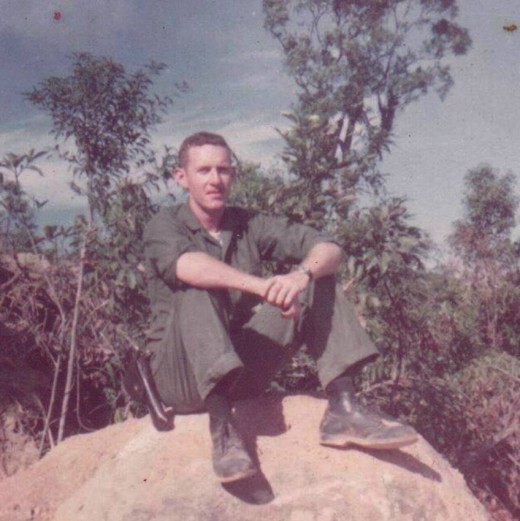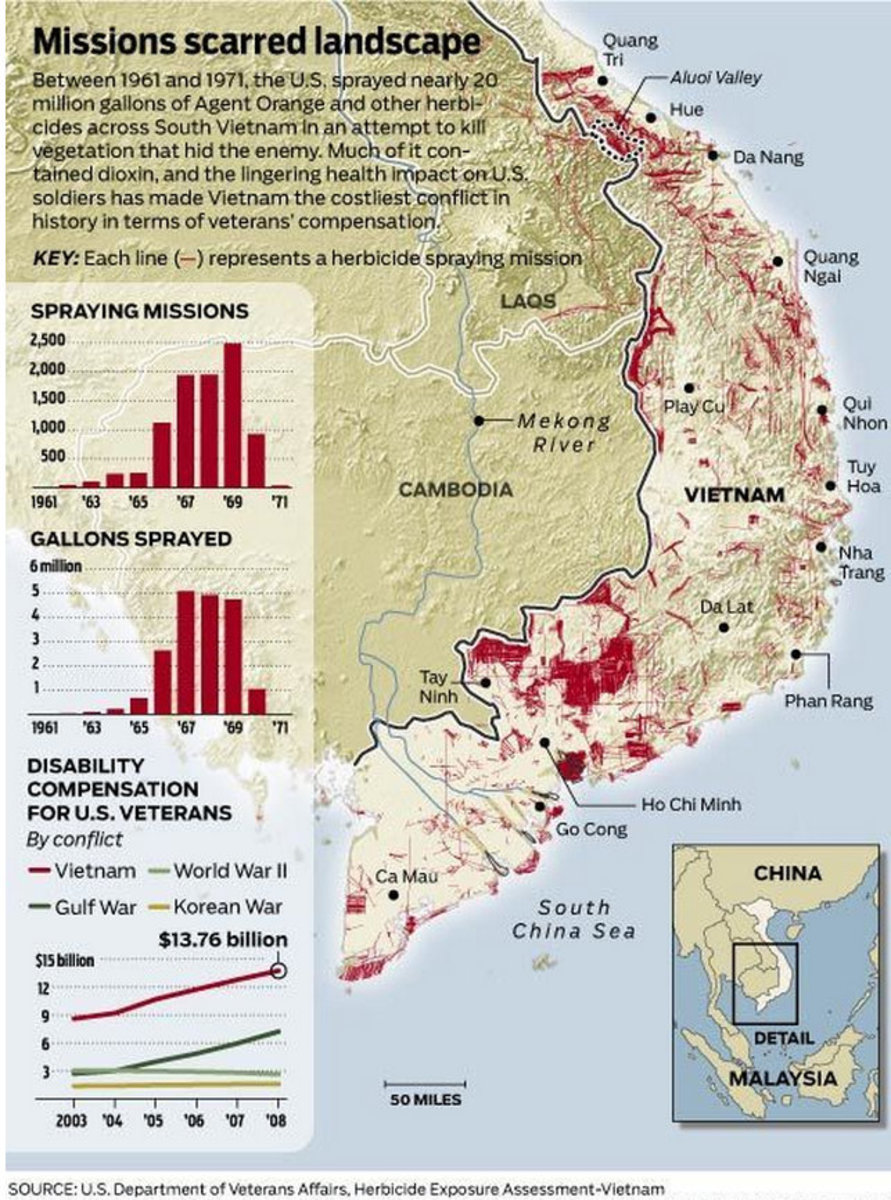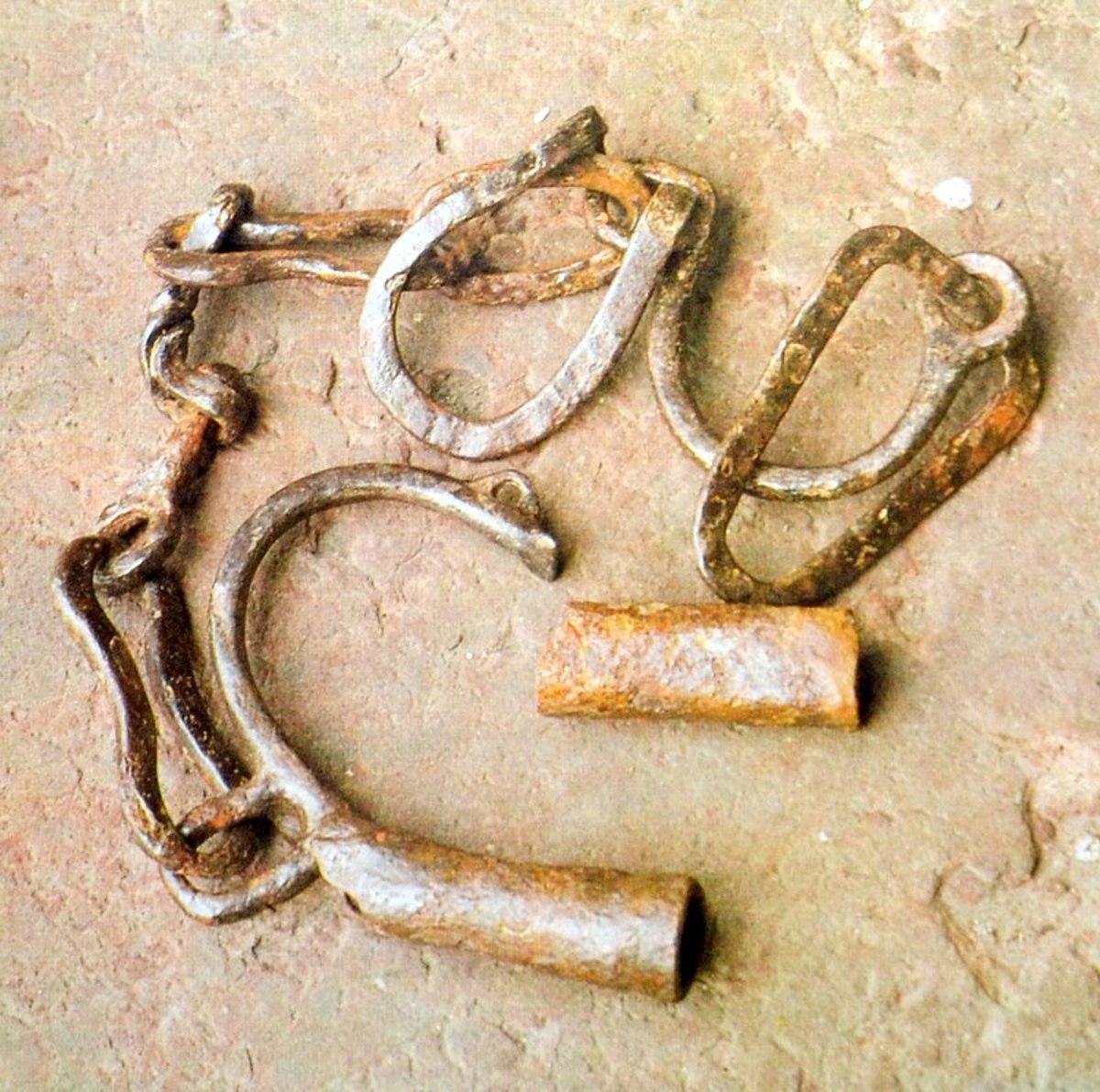Alternative Universe (A Counter Argument in Favor of VA Presumptive Ratings)
Tilford in Vietnam, 1967

Alternative Universe
There are coldly logical people who object to presumptive service connected disability ratings such as [at least some of] the current fourteen1 “presumptives” listed by the Department of Veterans Affairs as related to Agent Orange exposure. Some of these people work for the Government and are motivated by a desire to conserve resources, i.e., to reduce the amount of compensation paid to disabled veterans. I’m old enough to have seen these cost cutting initiatives repeated a few times, just far enough apart for the respective initiators to have no memory of the previous attempt. Usually, they go like this: “We’ll replace the single compensation rate table with two; one for disabilities incurred directly from combat and one for other service connected disabilities. The rates payable will be less for the non-combat disabilities.” This approach seems to have been tiered in an attempt to reduce opposition from the military service organizations, several of which have considerable political clout. Some initiatives drop the second half altogether and would only pay compensation to veterans clearly disabled in combat. Hold these thoughts. I’ll come back later. But first, let’s make quick work of the second category of questioners:
Some other people, such as an intelligent lady who was a guest in our home a few months ago, “just didn’t think it’s right” that compensation can be awarded to a veteran for a disability that he or she might have developed in old age without ever having been in the military. She and I were talking about a high school classmate of mine. Bob and I were Marines in Vietnam at the same time, but neither of us knew of our proximity until years later. I was extremely lucky and served a total of eighteen months on Monkey Mountain, east of Danang. I was nominally a computer repairman for the Marine Tactical Data System used for air traffic control and threat acquisition. But, since I really was not all that great a technician, I spent most of my Corporal, E-4 time doing general snuffy work such as guard duty, mess duty, and whatever else was too dirty2, too hot, too dry, too cold, or too wet for higher ranking and better motivated Marines to do. I was shot at a grand total of twice, and missed each time. Bob, on the other hand, served twelve months in a variety of not-safe places, was shot at several times, and was regularly exposed to the nasty stuff our own planes sprayed from overhead. Bob has peripheral neuropathy in both feet, diabetes type 2, and some of the psychological damage which affects normal people put through horrible things. I don’t think the nice lady would question Bob’s post-traumatic stress disorder. She did question his neuropathy and diabetes. Her point was that a high proportion of such mid- to late-60’s age men as Bob and I would have had – let’s focus on one condition – diabetes.
Let me interject one of Bob’s observations. He and five other former Vietnam Marines happened to meet at an “MIA-POW” ceremony in 2011. They talked and eventually, as getting-old men do, got around to discussing physical problems. All six had diabetes. Five had had at least one of the Agent Orange presumptive cancers. The veteran with the worst cancers had actually seen the airplane spraying Agent Orange pass overhead and felt the chemical spray on his skin moments later. All of these Marines had filled their canteens with water from pools which were open to the sky. As Bob once pointed out to me, eighteen year old young men joining the Marine Corps in 1965 were, compared to the general population, a “rather robust lot”. Now they are disabled, tired, pricking themselves to check the level of sugar in their blood, taking insulin injections, and in near constant pain.
I did not point out to the nice lady in our living room that there may be an alternative universe wherein Bob never joined the Corps or any other branch of the active military. Maybe he went to Canada. Maybe he hid in the National Guard. Whatever. She would have readily joined this conjecture and added, “And he still developed diabetes type 2 in his sixties!” I offer this response to the nice lady’s hypothetical comment and to all those who oppose presumptives: there may be such alternative universes, but we don’t live in any of them. We live in this universe. In this one, Bob passed his entrance physical with flying colors, served honorably in an environment poisoned with dioxin, and developed diabetes. Also in this universe -
The Secretary of the Department of Veterans Affairs is required to consider reports received from the National Academy of Sciences’ Institute of Medicine (IOM) and all other sound medical and scientific information and analysis on the health effects of herbicide exposure before making a decision on presumptive service connection. For example, in the report, Veterans and Agent Orange, Update 2008 (2009), IOM reviewed new studies and determined that there is “limited or suggestive” evidence of an association between herbicide exposure and the subsequent development of Parkinson’s disease and ischemic heart disease. The IOM also determined that hairy cell leukemia and all chronic B-cell leukemias belong in the category of “sufficient evidence of an association.” This assessment by IOM contributed to the Secretary’s decision to add these diseases to the presumptive list and publish the required notice in the Federal Register.
The Agent Orange Act of 1991 established the above described procedure for adding diseases to the list of disabilities presumptively associated with herbicide exposure. The Act arose from –
- Initial VA denials of positive correlation, much less demonstrated cause-and-effect, of disabilities among Vietnam veterans due to exposure to “Agent Orange” and other defoliants. These chemical cocktails laced with Dixon were liberally applied in Vietnam in an effort to deprive natural concealment to the enemy tactical and logistics forces. These VA rejections took the forms of denials of veterans’ claims for service connected disabilities, of negative internal adjudication guidance, and of public announcements. In a tragic algebraic equation which will never be solved, we hope the lives saved by application of the defoliants equal or exceed the lives lost3 and lives ruined.
- A series of civil suits against Dow Chemical and the Department (then the Veterans Administration), including a successful class action suit against Dow. Remember the 1984 Bhopal disaster4 in India, more clearly associated with Dow Chemical, which reinforced the public pressure on the VA.
- Mounting public (and therefore political) pressure for the VA to “do something”. The impetus increased as increasing numbers of Vietnam veterans became afflicted with various cancers shown in peer-reviewed medical studies to be associated with exposure to Dioxin. Vietnam veterans, their wives, children, parents, friends, neighbors – they all vote.
In this universe, not only is there pretty convincing correlation between service in Vietnam and our example of diabetes type 2, but the Secretary must also consider other significant pressures when making decisions regarding the Agent Orange presumptive list of disabilities. A cynic would consider the Secretary’s recent decisions adding B-cell leukemias and ischemic heart problems as pragmatic, almost defensive.
Let me throw in an observation: no adjudication system is perfect. Medals, promotions, disability compensation, they all result in deserving individuals denied and undeserving individuals approved. The very best systems have a higher proportion of the former and a lower proportion of the latter. Let me ask a question: would you rather deny a veteran compensation who followed orders, served in a nasty environment, and is now permanently harmed as a result in order to make it more likely the undeserving are also denied? Or tolerate the approval of a few undeserving in order to make it more likely the disabled veteran who served honorably is compensated? Welcome to the universe in which we live. This part does not have easy answers.
Agent Orange “presumptive” conditions recognized by the Department of Veterans Affairs
- AL Amyloidosis
A rare disease caused when an abnormal protein, amyloid, enters tissues or organs - Chronic B-cell Leukemias
A type of cancer which affects white blood cells - Chloracne (or similar acneform disease)
A skin condition that occurs soon after exposure to chemicals and looks like common forms of acne seen in teenagers. Under VA's rating regulations, it must be at least 10 percent disabling within one year of exposure to herbicides. - Diabetes Mellitus Type 2
A disease characterized by high blood sugar levels resulting from the body’s inability to respond properly to the hormone insulin - Hodgkin’s Disease
A malignant lymphoma (cancer) characterized by progressive enlargement of the lymph nodes, liver, and spleen, and by progressive anemia - Ischemic Heart Disease
A disease characterized by a reduced supply of blood to the heart, that leads to chest pain - Multiple Myeloma
A cancer of plasma cells, a type of white blood cell in bone marrow - Non-Hodgkin’s Lymphoma
A group of cancers that affect the lymph glands and other lymphatic tissue - Parkinson’s Disease
A progressive disorder of the nervous system that affects muscle movement - Peripheral Neuropathy, Acute and Subacute
A nervous system condition that causes numbness, tingling, and motor weakness. Currently, it must be at least 10 percent disabling within one year of herbicide exposure and resolve within two years. VA proposed on Aug. 10, 2012, to replace “acute and subacute” with “early-onset” and eliminate the requirement that symptoms resolve within two years. - Porphyria Cutanea Tarda
A disorder characterized by liver dysfunction and by thinning and blistering of the skin in sun-exposed areas. Under VA's rating regulations, it must be at least 10 percent disabling within one year of exposure to herbicides. - Prostate Cancer
Cancer of the prostate; one of the most common cancers among men - Respiratory Cancers (includes lung cancer)
Cancers of the lung, larynx, trachea, and bronchus - Soft Tissue Sarcomas (other than osteosarcoma, chondrosarcoma, Kaposi’s sarcoma, or mesothelioma)
A group of types of cancers in body tissues such as muscle, fat, blood and lymph vessels, and connective tissues - Children with Birth Defects VA presumes certain birth defects in children of Vietnam and Korea Veterans are associated with Veterans’ qualifying military service. The most commonly accepted birth defect is spina bifida. If the VA determines that the child’s birth defect was due to the veteran parent’s service, compensation is paid to the child. This is the only situation in which the VA pays disability compensation to someone other than the veteran.
[1] Fifteen, if we include compensation to the children with birth defects who were born to veterans exposed to Agent Orange. Spina Bifida is the primary example.
[2] Like the “honey run”. Don’t ask.
[3] Chief of Naval Operations Elmo Zumwalt, Jr. ordered the use of defoliants which almost certainly caused the death of his son, Elmo R. Zumwalt III, in 1988 at age 42. The younger Mr. Zumwalt said he never blamed his father for his disease. The two co-wrote a book titled ''My Father, My Son,'' published in 1986. Adm. Elmo R. Zumwalt Jr. commanded naval forces in Vietnam from 1968-70, then served as Chief of Naval Operations until 1974, when he retired from active duty. His son served in Vietnam from June 1969 to August 1970 as a lieutenant junior grade commanding a patrol boat. The younger Mr. Zumwalt was diagnosed in January 1983 as having lymphoma, a cancer of the lymphatic system. In February 1985, during his ninth biopsy, physicians discovered he also had Hodgkin's disease, another form of lymphoma marked by the inflammation of lymphoid tissues.
[4] The Bhopal disaster occurred on the night of 2–3 December 1984 at the Union Carbide India Limited pesticide plant in Bhopal, Madhya Pradesh. Over 500,000 people were exposed to methyl isocyanate gas and other chemicals. The toxic substance made its way in and around the shanty towns located near the plant. An estimated 16,000 died and hundreds of thousands were injured, approximately four thousand permanently.








